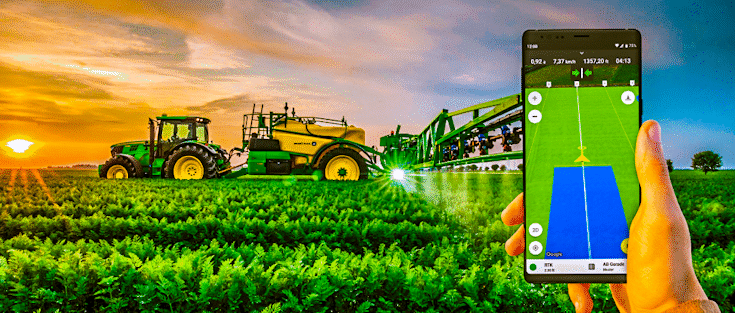An RTK base station is a crucial component of any precision farming system, providing a stable and highly accurate navigation signal for agricultural machinery. The correct choice of equipment ensures the reliable operation of auto steering systems, accurate execution of agrotechnical tasks, and the overall effectiveness of implementing digital technologies on the farm. In this article, we explore the key parameters farmers should evaluate when selecting an RTK base station — view all features to make sure your investment brings the highest possible return.
Stable Operating Range
One of the primary criteria when selecting an RTK base station is its effective range, within which it can transmit correction signals without loss of accuracy. For farms with large fields, it is important that the coverage area extends at least 10–20 kilometers. This allows all fields to be serviced from a single location without the need for additional transmitters or repeaters. The greater the range, the lower the costs for extra infrastructure, the simpler the maintenance, and the more reliable the operation of equipment even in remote or hard-to-reach areas.
High Coordinate TransmissionAccuracy
The accuracy of data transmission is the foundation of any precision farming system. Even minor deviations of a few centimeters can result in errors during sowing, fertilizer application or inter-row cultivation. Modern RTK stations provide accuracy within 1–2 centimeters, but when selecting equipment, it is important to consider not only the stated specifications but also signal stability under real working conditions: cloud cover, uneven terrain, proximity to trees, buildings or power lines. The more consistently the station maintains precision in challenging conditions, the more reliable the entire guidance system will be.
Compatibility with Existing Equipment and Software
An RTK base station should integrate seamlessly into the existing ecosystem of the farms, working with current tractors, sprayers, seeders, auto steering systems, terminals and agricultural software platforms. Compatibility with data transmission protocols, support for common communication standards (such as NTRIP), and the ability to connect via CAN bus or wireless channels all help avoid additional costs for re-equipping machinery. Universal systems offer greater flexibility for fleet modernization and allow new technologies to be introduced gradually without unnecessary investment.
Durability and Environmental Protection
Field operating conditions demand equipment to be highly resistant to environmental factors. An RTK station must withstand temperature fluctuations, strong winds, rain, dust, dirt and direct sunlight. It is also important that it includes protection against power surges, lightning strikes and mechanical damage. A reliable, sealed housing and resilience to harsh environments ensure the long service life of the equipment without breakdowns or frequent servicing.
Ease of Installation and Setup
For farmers, not only reliability but also ease of implementation is important. Modern RTK stations are supplied with convenient mounting systems, compact antennas and well-designed software for quick setup. Ideally, the station should support automatic self-calibration, offer an intuitive interface and provide step-by-step installation instructions. This enables the system to be deployed quickly without the need for specialized installation teams and allows the station to be easily relocated or recalibrated as necessary.








